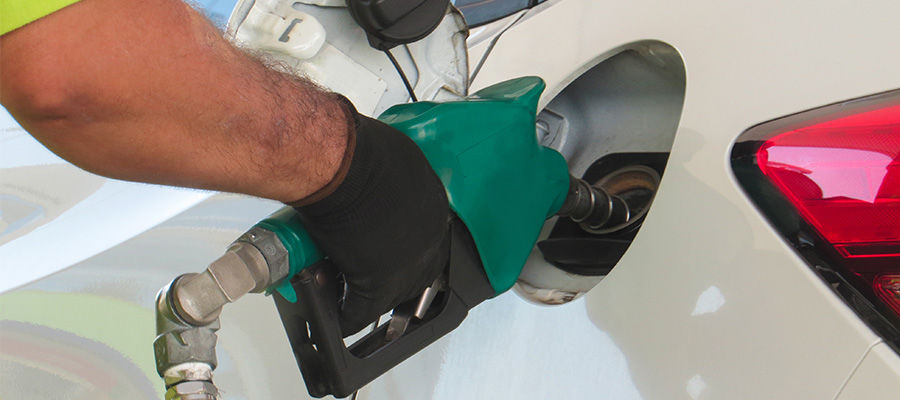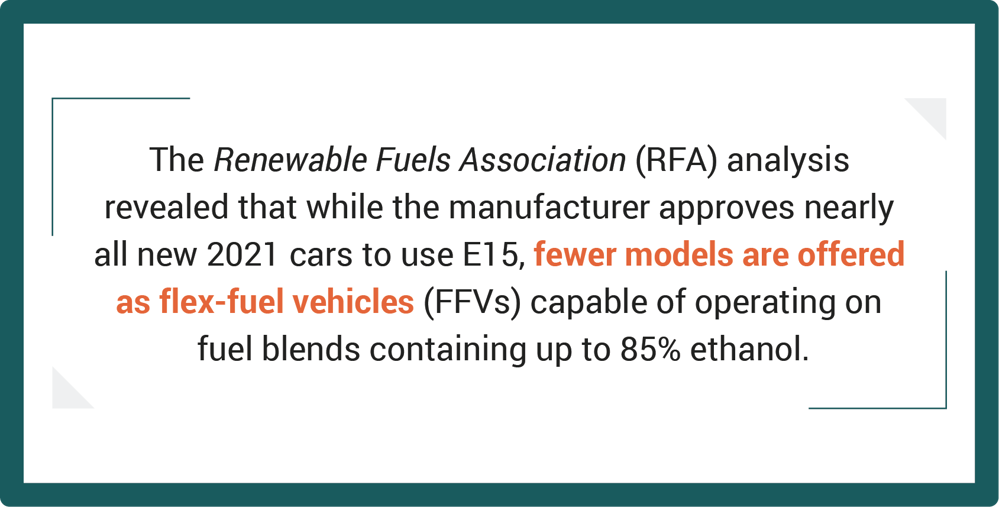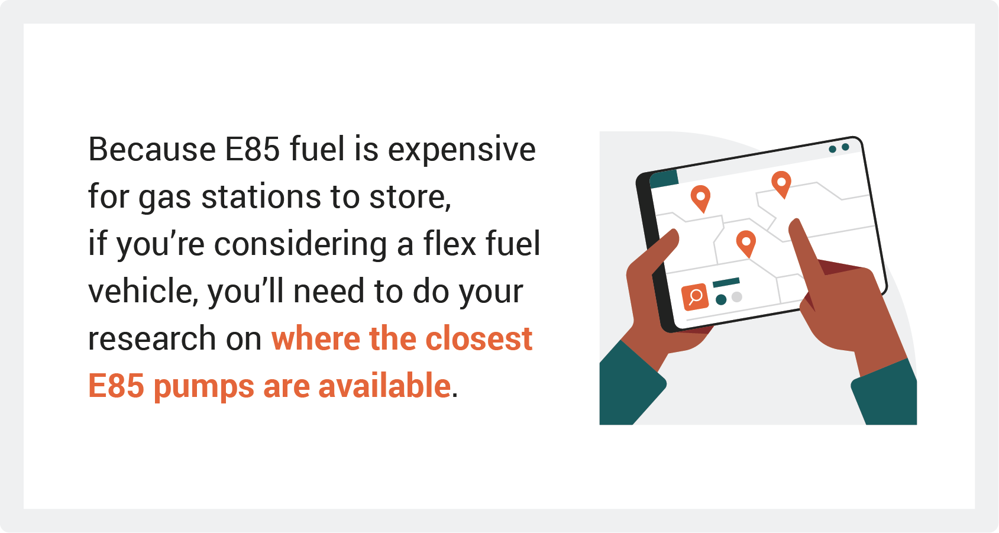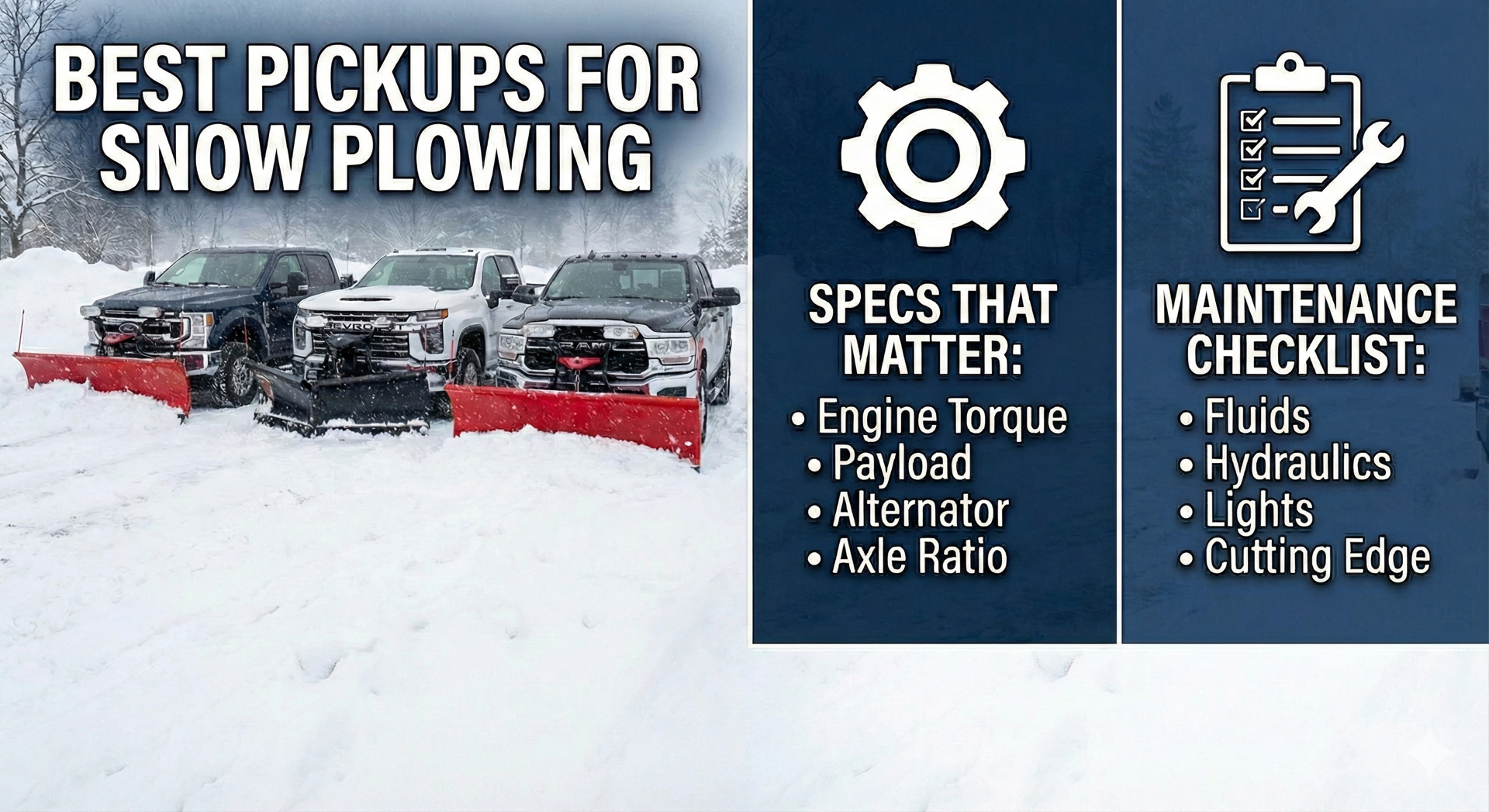Flex Fuel Vehicles: E85 Fuel Explained


Flex Fuel Vehicles: E85 Fuel Explained
What Does Flex Fuel Mean?
A Flex-Fuel vehicle’s engine can use standard gasoline and E85 gasoline that’s between 51-83 percent ethanol. E85, made by fermenting and distilling corn, was supported by the US government to stretch the earth’s oil supply, lessen pollution, and help create agricultural jobs. Although many would quickly prove that diverting corn from food isn’t the best use of resources and energy, we have many vehicles in the US that run on ethanol. So, since they’re here, let’s look at the options, benefits, and challenges of running ethanol for your commercial equipment.
Ethanol Commercial Vehicles
Legend has it that Henry Ford built the Model T to run on gasoline and ethanol to aid farmers in making their own fuel. Henry came from a farm, so it only made sense to try and help the farmers. This would have made it the great ancestor of today’s cars and ethanol vehicles.

However, Hemmings says there’s no evidence of that being true. But even though Henry didn’t incorporate it into his original vehicles, Ford and others have Flex Fuel vehicles you can use for your business today.
For 2021, many of the models available are trucks and sport-utility vehicles that are commonly used in commercial applications.
How Common are Flex Fuel Commercial Vehicles?
Hoping to relieve the oil demand, the US government incentivized Ford to begin the development of a flexible-fuel vehicle in 1982, and between 1985 and 1992 offered them for sale to the consumer.

Since that time, Ford and GM have produced the bulk of E85 vehicles, but Dodge, RAM, Jeep, Mercedes, and Nissan have also made E85 models. As a result, there have been an average of 6 million ethanol-burning cars on the road at any year, and half of those are commercial or government fleet models.
For 2021, however, BioFuels News reports that only two manufacturers — Ford and General Motors — offer FFVs in their new models. As a result, just 11 models will be available as FFVs in 2021, with five of those models available only to fleet purchasers. That is down from more than 80 different models from eight manufacturers being available to consumers in 2015, according to the RFA.

Although the Flex-Fuel E85 vehicles look similar, there are significant differences except for the Flex-Fuel badges. For example, the engines have extra sensors to monitor gasoline and E85 fuel. And, since E85 has only 30 percent of the energy of regular gasoline, the engine’s computer must detune the engine for smooth running. And the fuel systems have metal-infused fuel lines that prevent the corrosive effects of ethanol.
Where Can I Buy Flex Fuel?
Flex-Fuel adoption issues face similar hurdles as battery-electric and fuel cell electric vehicles. The infrastructure isn’t available for Ethanol fuel distribution like gasoline.
Although a significant concentration of E85 capable gasoline stations is in the Midwestern United States corn belt area, the rest of the country has fewer fueling options. Minnesota has the most E85 stations, followed by Michigan, Illinois, Iowa, Indiana, and Texas.
E85 fuel requires a dedicated storage tank installation at gas stations which costs over $70,000 for each tank. Unfortunately, with the limited number of vehicles available and sold, companies aren’t willing to install the tanks and pumps. So, if you’re considering E85 use, it’s essential to make sure pumps are available near you.

E85 availability is growing, however. Sources say there are over 4,800 public E85 capable gas stations in the US. The Department of Energy website provides a map to locate the Flex-Fuel capable stations near you.
When E85 pumps aren’t available, Flex-Fuel vehicles can use non-ethanol gas, although you can’t use E85 fuel in a non E85 vehicle. This is because E85 fuel will damage seals in the fuel system and cause your engine to run poorly.
Is Performance the Same with E85 Fuel?
No, Flex-Fuel engines generally provide 20 percent more power. Although there’s less energy in a gallon of E85 fuel, you’ll get more horsepower and torque than if you used regular gasoline. In addition, EflexFuel.com says E85’s faster ignition time leads to higher cylinder pressure, increasing engine torque and horsepower.
Even though the engines are more powerful, there’s generally a 30 percent loss in fuel mileage using E85 fuel. The positive trade-off is that you’ll be burning less oil-based fuel and driving an environmentally friendly vehicle.
Does E85 Fuel Cost More?
No, in most states, #85 is 25-35 percent less than other high-octane fuel. For example, recent prices in California show E85 at $2.69/gallon and Regular gasoline at $4.59/gallon, and Minnesota prices show E85 at $2.39 and Regular gasoline at $3.17.

For assistance to your fleet’s application, the Department of Energy provides a vehicle cost calculator. You can compare Flex-Fuel commercial vehicles’ total cost of ownership and emissions against the makes and models of most vehicles, including alternative fuel and advanced technology vehicles.
Current Flex-Fuel Vehicles
FuelEconomy.gov says Ford and General Motors produced 11 Flex Fuel models in 2021, and five of those models were only available to fleet purchasers. Automakers once made over 80 different models from eight manufacturers in 2015. Once the purchase and tax incentives disappeared in 2016, sales and new models also disappeared to these available options. Comvoy has multiple options for Flex-Fuel vehicles.
2022 Chevrolet Silverado
E85 Fuel Economy
11 mpg city / 15 mpg hwy / 12 mpg combined
Conventional Fuel Economy
15 mpg city / 19 mpg hwy / 16 mpg combined
Engine
5.3L V8
Transmission
Auto
Drivetrain
RWD/4WD
2022 Ford F-150 2WD FFV
E85 Fuel Economy
14 mpg city / 18 mpg hwy / 16 mpg combined
Conventional Fuel Economy
19 mpg city / 24 mpg hwy / 21 mpg combined
Engine
3.3L V6
Transmission
Auto
Drivetrain
RWD/4WD
2022 Ford Transit Connect Van FFV
E85 Fuel Economy
18 mpg city / 20 mpg hwy / 19 mpg combined
Conventional Fuel Economy
24 mpg city / 27 mpg hwy / 25 mpg combined
Engine
2.0L I4
Transmission
Auto
Drivetrain:
FWD
2022 GMC Sierra 2WD
E85 Fuel Economy
11 mpg city / 15 mpg hwy / 12 mpg combined
Conventional Fuel Economy
15 mpg city / 19 mpg hwy/16 mpg combined
Engine
5.3L V8
Transmission
Auto
Drivetrain
RWD/4WD
What About Flex-Fuel for My Fleet?
Promising studies show that Flex-Fuel replacements for fleet pickups and delivery vehicles may be a good choice in the short term. For example, Canada’s CSL Group recently finished the world’s longest-running trials of B100 biodiesel on marine engines.
BioFuels International reported, “The Canadian bulker operator accumulated nearly 30,000 running hours after the tests were conducted in late November 2021 on half of CSL’s fleet. According to the company, the tests resulted in a 23% total fleet life cycle reduction of CO2 as compared to marine gas oil (MGO).”
With pressure and tax incentives in some states to lower a company’s carbon footprint, a 23% reduction of CO2 can add a considerable amount to the bottom-line profit. And, given that there’s minimal infrastructure cost, assuming businesses have an E85 station nearby, they may have a perfect cost-effective and profitable sustainability solution while waiting on the EVs to catch on.
Published on: January 20, 2022






